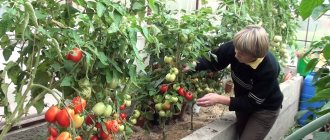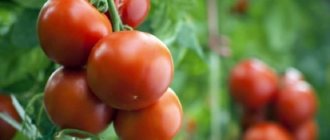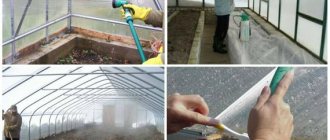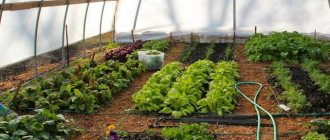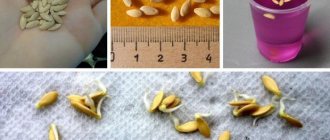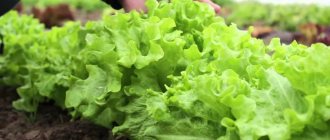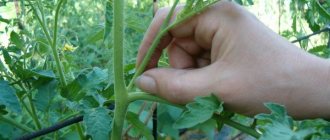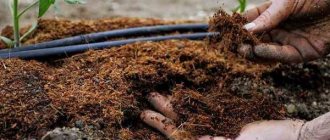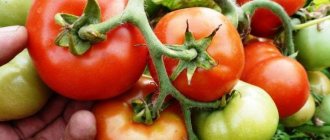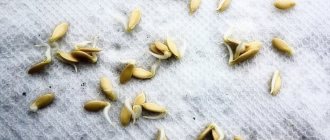Preparing the beds
Plants need enough light, so it is best to place the beds from east to west. Before planting seedlings, the soil needs to be dug to a depth of 35-40 cm.
It is important to prepare loose and nutritious soil. If necessary, peat, sawdust or chopped straw should be added to the soil. These loosening materials should make up 15-30% of the total soil mixture.
If cucumbers grew in this place last season, there is no need to apply organic fertilizers when planting. Otherwise, the tomatoes will actively grow green mass, and you may not get fruit at all.
Disease Prevention
In order to save the future harvest, it is important to carry out timely prevention against diseases to which tomatoes are susceptible. Indeed, many novice summer residents complain about the attenuation of seedlings some time after transplanting into the greenhouse. It is important to follow the rules of crop rotation, which excludes planting one crop in the same place as last year.
Autumn digging should be carried out before the first frost so that the spores and larvae freeze out. It is better to remove plant debris in the greenhouse at the end of the season, because... they are an excellent refuge for various microorganisms. Plants can be treated with special herbal preparations. It is important to use high-quality seed when planting.
Planting tomato seedlings in a greenhouse
Plants are planted in holes 12-15 cm deep, which are placed in two rows at a distance of 70 cm. Before planting, 1.5-2 liters of a hot light pink solution of potassium permanganate is poured into each hole, and when the liquid is partially absorbed, forming a slurry in the soil , the plant is placed there along with a lump of earth and buried down to the first true leaf. Then a little loose soil is added to the stem, compacted, and mulched with peat or humus.
For medium-sized tomatoes, the holes should be at a distance of 30-35 cm, and for tall ones - every 45-50 cm
After planting all the seedlings above the rows at a height of 2 m, stretch the wire and use twine to tie each plant to it. As they grow, the stems are twisted around the twine so that the turn falls on 2 internodes.
Secret 4: strong roots
No one will even argue: the stronger and stronger the root, the more fruits it can provide with nutrition, and the larger these fruits can be. What can we do to “strengthen” the root system of a tomato bush?
Spud
Hilling, it turns out, also has its secrets. It is necessary to hill up at the moment of root growth... but the roots of tomatoes do not grow continuously, but in periods. It happens something like this: at first the roots grow rapidly, then they slow down their growth, and the vegetative mass begins to actively grow. Then root growth is activated again - until the moment when flowering and fruit set begin. Once this process has begun, the roots slow down their growth again.
It is necessary to hill up tomatoes at the moment of root growth
The plants themselves will tell you when it’s time to hill up. Keep an eye on the stem: if small protuberances, like pimples, appear on it near the ground itself, this means you can spud for the first time (be sure to use moist soil, not dry!). And when the stem near the ground changes color from green to bluish, it tells you that the time has come for the second hilling. If you follow this and do everything in a timely manner, the tomato will be able to grow its root system as much as possible, thereby providing more strength for the harvest!
Mulch
No one has doubted the benefits of mulching for a long time. Under the protective layer of mulch, a soil crust does not form, moisture is retained, the soil structure is not disturbed, weeds do not sprout and roots are not exposed when watering. That's the whole secret: one mulch - but many benefits! Summer residents testify: proper mulching can increase the yield of a bush... by 25-30%!
In the following video, Valery Medvedev talks about mulching tomatoes with forest soil:
How can you mulch tomatoes? Hay, straw, compost, sawdust, newsprint, fallen leaves, grass clippings, tree bark, pine needles, peat and even your own leaves. The main thing is to choose the right mulch for your conditions and apply it correctly:
- How people mulch their beds: 14 of the most practical ways that I managed to spy;
- Secrets of mulching with organic materials;
- Mulching beds with cut grass is another recipe for an excellent harvest.
Caring for tomatoes in a greenhouse
Optimal temperature for plants: 18-26°C during the day and 15°C at night. Please note that the bright spring sun can be destructive, so it is recommended to whiten the glass of the greenhouse. This will prevent the plants from getting too hot.
In hot weather, the greenhouse must be ventilated, and this must also be done after each watering, which should be accompanied by loosening the soil. Greenhouse tomatoes are watered for the first time a week after planting the seedlings, and then every 3-7 days (depending on the weather).
Tomatoes need regular and generous watering
Tomatoes do not like high air humidity; the most suitable level is 45-65%. However, during fruit formation, tall plants are watered abundantly (20 liters of water per sq.m.). Then the humidity in the greenhouse increases, and ventilation in this situation is not always effective.
In this case, it is better to water the tomatoes through plastic bottles with the bottom cut off. They are installed near each plant with the neck down.
Secret 7: removing leaves
In addition to pinching, the leaves of tomato bushes are torn off during the fruiting period. This is done so that the plant devotes all its energy to flowers and fruits. In addition, the lower leaves, in contact with the ground, can become a conductor of infection.
Experienced summer residents advise cutting off 1-3 lower leaves every week from mid (late) June until the first inflorescence. Then the tomatoes will be “ventilated” and the extra load will be removed from the bushes. Each summer resident decides for himself how many leaves to remove from a bush. There is one rule that will help you get your bearings: until all the fruits are in the cluster, on top (above the cluster) all the leaves should be “available.” It is recommended to remove leaves in dry, warm weather, in the morning, so that the wound has time to heal and does not become a gateway to infection.
The following video will introduce us to the system for trimming the leaves of tomatoes grown in a greenhouse. The pruning lesson is taught by Valery Medvedev (directly about pruning leaves - from 3.41):
In my opinion, removing leaves is a very useful technique.
Fertilizer application
Greenhouse tomatoes must be fed. This is done 2-3 weeks after planting the seedlings and subsequently every 10-12 days. Tomatoes need phosphorus-potassium fertilizers. So, for 1 sq.m you will need 20-25 g of superphosphate and 15-20 g of potassium sulfate. And when the tomatoes begin to bear fruit, you need to add 2 tbsp to the soil. l. superphosphate and 1 tbsp. l. sodium humate, diluted in 10 liters of water.
To obtain an early harvest, foliar feeding is good: 16 g of urea, 10 g of superphosphate and 16 g of magnesium sulfate are diluted in 10 liters of water.
Selecting varieties for growing in greenhouse conditions
When choosing a tomato variety for growing in a greenhouse, you need to take into account ripening time, plant height, size and color of tomato fruits (there are now for every taste), as well as disease resistance.
- early ripening (from germination to ripening - less than 100 days;
- mid-ripening (ripening period - 100-120 days);
- late (ripening period - more than 120 days).
The champions in terms of fruit size are the large-fruited ones. The weight of the fruit often exceeds 150 grams. Fleshy inside, excellent taste and small amount of seeds. The advantage of these varieties is that they are less likely to suffer from fungal and viral infections.
The classic color of tomato fruit is red. Red tomatoes contain much more beneficial nutrients for the human body. Although, the modern color variety of tomato fruits is pleasing to the eye: pink, orange, yellow and even black.
Tomato varieties with “bicolor” fruits have an unusual color: they combine several shades of the same or different colors, both outside and inside. The fruits taste sweet, regardless of weather conditions. This coloring of the fruit occurs both in large-fruited tomato varieties and in medium-sized and small-sized fruits (cherries).
The greenhouse season on a personal plot begins early. How to grow tomatoes in a greenhouse made of polycarbonate or glass does not make much difference. First of all, you need to put things in order:
- remove all unnecessary things left over from last year (old garter material, plant remains;
- wash the greenhouse both inside and outside.
All counters, polycarbonate or glass are treated with the addition of disinfectant detergents, such as bleach. Prepare a solution at the rate of 100 ml. whiteness per 10 liters of water.
To increase translucency, which tomatoes are very fond of, we wash the walls of the greenhouse, removing dust, plant debris, and mold. After 2-3 hours, rinse again with clean water and leave open for ventilation.
Arrangement of beds
We treat the beams and wooden sides of the beds with copper or iron sulfate so that rot, mold and moss formed due to high humidity do not destroy the wood. We prepare and dig up beds for plants.
The width of the beds for growing tomatoes is no more than 1 meter, the height of the nutrient layer is no less than 25 cm.
What kind of soil is needed in a greenhouse for tomatoes?
Growing tomatoes in a greenhouse requires special attention to the composition of the soil. Tomatoes love loose, air- and moisture-permeable soil. Every year the top layer is removed from the ridges and replaced with fresh soil with the addition of compost, humus and ash. It is recommended to sow green manure to enrich the soil with nitrogen.
How to prepare the soil for planting tomatoes
Ideally, soil preparation for growing tomatoes in a greenhouse is carried out in the fall.
If it was not possible to do this in the fall, then you can sow green manure in early spring, before the snow melts. The seeds are not planted deeply and covered with snow. When the snow melts, it will moisten the soil in the greenhouse beds. When all the snow has melted, when watering green manure for the first time, add 1 tbsp. spoon of phytosporin per 10 liters. water.
Grown green manure (10-15 cm) is cut off and subsequently dug up with soil. This is how the preparation of the land for planting tomato seedlings begins.
A couple of weeks before planting the seedlings, we apply organic fertilizers. We scatter granulated horse or bird droppings over the surface of the beds and dig them to a depth of 15-20 cm. After which the soil must be disinfected from pathogens. Fitosporin and Myocard Nemato are suitable for this.
Temperature and humidity
Tomatoes love dry air, drafts, even and moderate watering, and warmth (from 18 to 26°C). At the same time, they can tolerate short-term temperature drops of up to 10-12 °C. With due care, they can withstand even short frosts down to -6 °C.
When to plant tomatoes in a greenhouse
The timing of planting tomato seedlings in a greenhouse depends on the climatic conditions of specific regions, and may also vary from year to year. Approximately: in the southern regions it is April-May, in the more northern regions it is May-June. We rely on folk signs and weather forecasters.
Growing and forming tomatoes
To get a good harvest of fully ripened fruits, the bushes need to be formed into one stem. To do this, a week after planting the seedlings, the lower stepsons are removed. Then this procedure is repeated every 10 days.
Stepchildren are all shoots that grow from the axils of the leaves.
Stepson of tomato
You can form tomatoes into 2 or 3 stems. In this case, you will get more fruits, but not all of them will have time to ripen. When grown in 2 stems, in addition to the main stem, a stepson is left, which is located under the first flower cluster. And when forming into 3 stems, a stepson is left under the first flower cluster and another strongest one.
Stepchildren marked with a cross are removed
Harvesting
A large and good harvest can be obtained if fruits are collected regularly. It is recommended to pick tomatoes at the stage of technological maturity with partial or full ripening. Tomatoes that are pink when cut are edible. Selective harvesting allows you to increase the total harvest volume. Overripe fruits lose their taste and generally reduce yield. Green fruits can be left on the bushes until the beginning of September.
